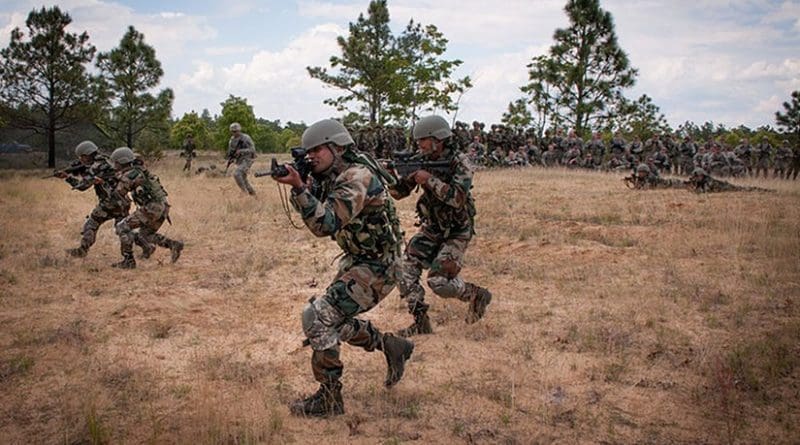An Appraisal Of India’s Agnipath Scheme – OpEd
India announced the adoption of a revamped form of conscription called as the “Agnipath Scheme” or “Agniveers,” in which 46000 young people aged 17 and a half years to 21 years would be recruited and trained in the three services’ cadres – Army, Navy, and Airforce. This statement has sparked new demonstrations in many Indian states, including Bihar, Haryana, Delhi, and Uttar Pradesh. Potential recruit candidates are concerned about the short duration of duty. However, there are some severe issues that must be addressed. The most pressing issue is why India is moving toward conscription while having a massive army and no direct danger to India in the nuclearized area. Will this move have any ramifications for the Bharatiya Janata Party’s (BJP) politicised India? Furthermore, the article will address the influence on the state of minorities and separatist movements in India, as well as the consequences for regional stability.
On June 14, 2022, the Indian government unveiled the “Agnipath programme,” which was approved by the Union Cabinet. Youngsters – “dubbed Agniveers” – will be recruited as solders below the level of commissioned officers under the plan. According to Indian media, 83 recruiting rallies will be held. The first batch will begin training in December 2022, while the second batch will begin in February 2023. After graduating from the military, they will serve in the army, air force, and navy for four years.
Because there is no employment stability, the protesting youngsters are heartbroken by the plan’s announcement of brief service. India is now battling unemployment issues owing to a lack of education and skilled training facilities. The initiative was seen as a direct attack on the youth’s source of income in India, particularly in places where most individuals join the military as a career. Although they will be paid, they will be sent home without any financial advantages after serving four years.
The ‘Agniveer’ will not be entitled to any gratuity or pension. It is critical to determine what these young people will do after serving four years without a pension or financial benefits, and how they will support their families. Furthermore, this is the age range at which people may get higher education – but in this scenario, they will be untrained and unable to contribute to society after their duty in the army.
According to figures provided by the Stockholm International Peace Research Institute (SIPRI) in April 2021, India is among the top military spenders, with US$ 72.9 billion in defence spending. Furthermore, the Indian army has 1.4 million active personnel. According to Indian defence analysts, the large number of standing army and retiree pensions is a drag on the economy. However, opponents of the plan questioned the army’s professionalism. Some analysts have also drawn parallels with the present Ukraine situation, in which the Ukrainian army failed to resist Russia due to inadequate training. As a result, they labelled the reasoning of retaining India’s conscription army — the ‘Agnipath plan’ – as irrational.
The modern period has given rise to national armies, which have supplanted the traditional notion of mercenary troops devoted to the country. In current social systems, the troops are in charge of protecting the land and are highly educated to employ modern technology and tools. The Agniveers under the scheme’s impacts may have an influence on society in addition to the military and business. When trained men return to society as jobless people, they will increase violence and disrupt the country’s social order.
India is already in the grip of violence, with Muslims being the primary target. During their protest against the present BJP government’s new agricultural rules, the Sikh community was subjected to use of force. The Hindtuva philosophy is blooming in areas where minorities are oppressed by the BJP’s Rashtriya Swayamsevak Sangh (RSS). The plan is available to everyone, but the development of Hindutva under the BJP and its treatment of minorities raises concerns among the populace about a fair recruiting procedure. According to the analyst, under the Agnipath project, persons who follow and support Hindutva will be recruited and taught, and the culture of weaponry and violence against minority groups and separatist movements would grow.
India boasts the world’s largest standing army of 1.4 million, in addition to a reserve army of 1.2 million, and a defence expenditure of $ 72 billion. It houses contemporary military equipment as well as nuclear weapons. Despite the current military stand-off between the two nations, it maintains solid trading relations with China. Furthermore, owing to the nuclearization, there is no room in the area for a full-fledged fight.
Even a small battle in the region has global ramifications, and the only way to address the matter is via discussions and bilateral talks. In this situation, the economic logic of maintaining the conscripted army is incomprehensible. This kind of initiative seems to be used to score political points and enhance Hindutva (RSS) ideology.
The author holds an M.Phil from National Defence University. He is a freelance writer and can be reached at [email protected].


Muslims and other minorities have equal protection under the law in practice in India quite unlike in Pakistan and in many other countries. Such narratives by Pakistani writers are intended to divert attention from the systematic repression of the minorities- Hindus, Sikhs and Christians – in Pakistan. Look at the statistics. Population of minorities have been increasing whereas in Pakistan they have declined and continue to shrink. Stop this hypocrisy. Nothing more need to be said.